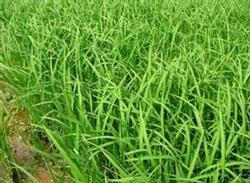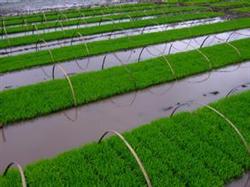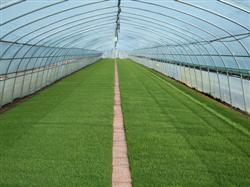Dry Seedling raising technique of Rice

According to the investigation in recent years, it is found that most of the rice seedlings are raised in the rice Honda. Honda has poor permeability and cold pulp under perennial flooding conditions, which is not conducive to the cultivation of strong seedlings. The dry raising of rice seedlings is to cultivate rice seedlings under the condition of dry land. The oxygen in the dry land soil is sufficient, and the water, air and fertilizer are easy to coordinate, which is conducive to the cultivation of strong seedlings. Making use of the advantage of strong seedlings, we can appropriately reduce the planting density and make more use of tillers to form panicles in Honda. Achieve large spikes and more grains, stable and high yield. The main advantages of this technique are as follows: short and strong seedlings, strong root activity, good cold tolerance, fast rooting after planting, exuberant tillers, high panicle rate, large spike and many grains, good fruiting, early planting and drought maturity, generally 3-5 days earlier than conventional planting. 1. Pre-sowing preparation (1) Seedling bed selection and preparation: choose the dry land that is convenient to irrigate and sunny (usually in your own garden), make the bed according to the same size specification, compact the bottom of the bed, and then cover the prepared bed soil, in order to improve the ground temperature, buckle the greenhouse film 5-7 days in advance. (2) preparation of bed soil: according to the fertility of the garden field, the rotten farm manure can also be used, and mountain humus soil can also be used to adjust acid when raising seedlings, but now the prepared seedling soil generally does not need acid adjustment and fertilization, and the bed soil is generally 5-6 cm thick. (3) seed preparation: ① seed drying: first drying the seeds for 3-5 days to improve the germination rate and germination energy. ② seed selection: select seeds with salt water after selecting wind. ③ disinfection and soaking seeds: first, disinfect the seeds with fungicides for 4 days, then soak them with acid water (PH=3.5-4) with a water temperature of 15 ℃ for 3-4 days, then rinse with clean water and accelerate germination. Technology of soaking seeds in acid water: according to authoritative records, soaking seeds in acid water with PH values of 3.5-4.0 can significantly improve the germination rate and germination energy of rice seeds, shorten the germination days and breast-breaking hours, have a strong stem base and well-developed roots, greatly reduce the incidence of rice seedling blight, and increase rice water in a certain range, with a yield increase of 6% 9%. ④ sprouting: soaking the seeds can accelerate the germination, the general temperature is about 30 ℃. If you soak the seeds with acidified water, you can break your chest in 20-22 hours. When 80% of the broken breasts are exposed, you can put them in a cool place to sow. 2. Sowing: generally sowing on April 10-15, the sowing rate is 4-5 taels / wet seed. The seedling bed was watered once one day before sowing, and on the day of sowing, the seeds were sprinkled evenly on the bed and watered again with a fine-eyed spray can to make the seeds stick to the bed surface. Cover the sifted fine soil (plus weeding and seal) with a thin film to keep warm and moisturize to facilitate seedling emergence. 3. Seedling field management: remove the paved film after the seedlings come out, keep the greenhouse temperature at about 30 degrees, and increase the vent to about 25 ℃ after the complete leaves of the seedlings are unfolded. Note: the beginning of ventilation is light wind, side wind, gradually strong wind, gradually transferred to natural refining seedlings. Fertilizer and water management: after the seedling is unearthed, it is observed that if there is water spitting at the leaf tip in the morning, it shows that there is no shortage of water. If there is no water spitting phenomenon, water should be replenished immediately, and it should be watered thoroughly at once. Dry seedlings are mainly based on base fertilizer, generally not topdressing.
- Prev

Key techniques of mechanized transplanting and raising seedlings of rice
Rice mechanized transplanting is one of the most direct and efficient light and simple cultivation methods. in recent years, the technology of popularizing and using mechanized rice transplanting has been mature, and seedling raising technology is one of the key technologies of mechanical transplanting. The following technical measures are provided for reference. 1. The requirements of rice transplanter for seedling walking or high-speed ride.
- Next

Dry Seedling raising technique of Rice Bowl in large and medium greenhouse
(1) seed selection. Heavy varieties of partial panicle with high quality, high yield, disease resistance and middle and high tillering ability should be selected. Wuyou Dao 1, Songjing 2, Tengxian 140, Wudao 3, Mudanjiang 19 were selected as the main varieties in the first accumulated temperature area, while Ning'an, Fangzheng, Yanshou and Betula platyphylla were selected in the second accumulated temperature area.
Related
- The first cup of black tea in spring, the flavor and history of tea gardens in Kenya, Africa
- The computer can not only choose potatoes, but also grow tea rice. AI will grow winter oolong tea champion.
- It is not only the inflated tea bitten by insects, but also engraved with the four seasons tea in Beipu.
- The Oriental Beauty Tea Festival in Zhuxian County takes the stage at the weekend to experience the plus-size feast of oil tea.
- & quot; Oriental Beauty Tea & Exploration of Emei in Hsinchu, the hometown of quot;
- The new variety of strawberry "Tainong 1" dessert is the first choice with mellow aroma. Crimson gorgeous
- History of Tea in Taiwan: from Wild Inner Mountain to Export Tea Garden
- Two types of Taiwan Oriental Beauty Black Tea won the British three-Star Award for Childhood Tea Xiang Zhang Jiaqi changed from pilot to champion tea maker.
- Banana species and varieties: the planting history of Taiwan Xianren banana and dwarf banana is long, is banana disease resistant?
- Coffee planting Technology: Qianjie Coffee from Seedling to harvesting

